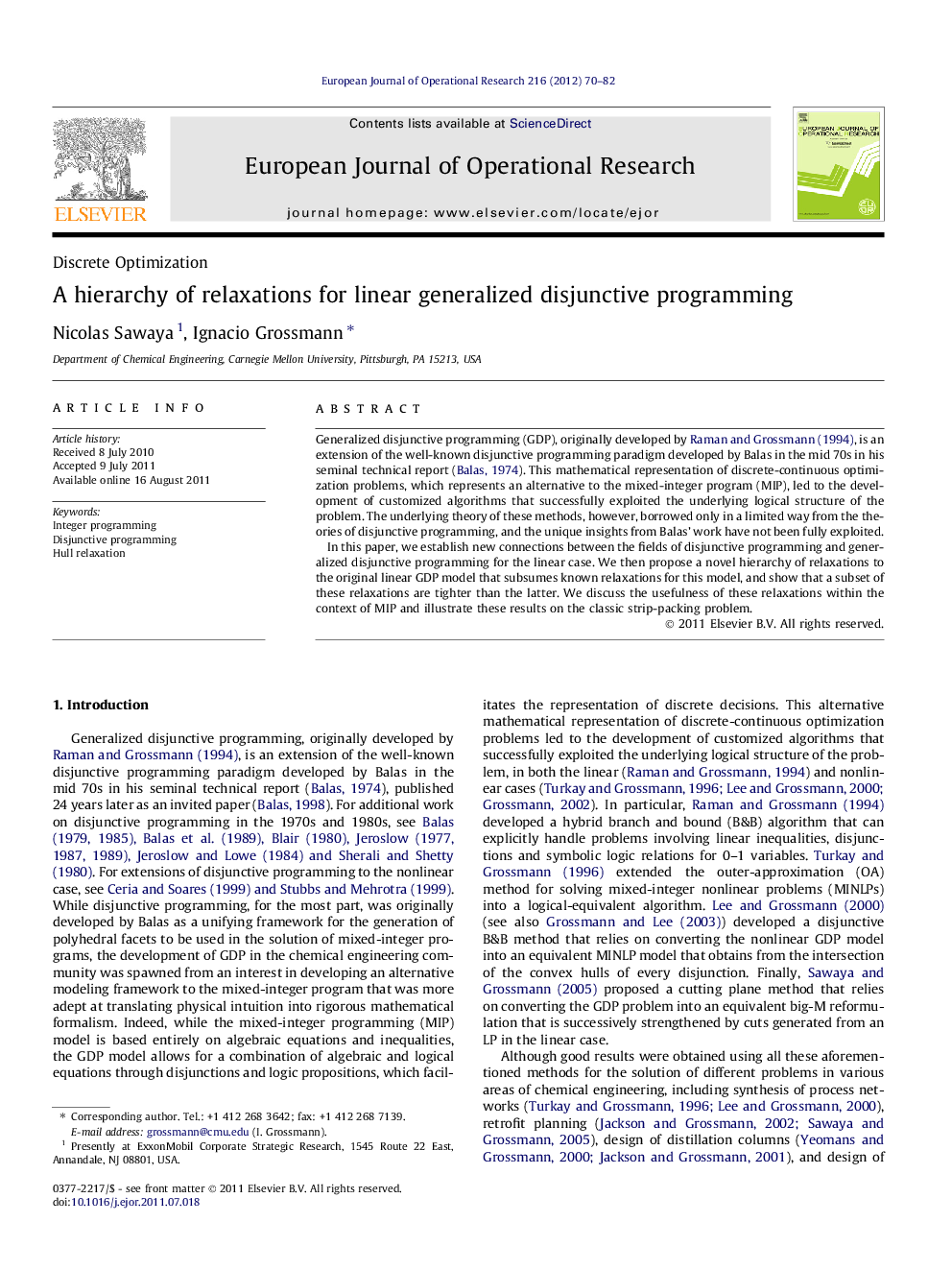| Article ID | Journal | Published Year | Pages | File Type |
|---|---|---|---|---|
| 480197 | European Journal of Operational Research | 2012 | 13 Pages |
Generalized disjunctive programming (GDP), originally developed by Raman and Grossmann (1994), is an extension of the well-known disjunctive programming paradigm developed by Balas in the mid 70s in his seminal technical report (Balas, 1974). This mathematical representation of discrete-continuous optimization problems, which represents an alternative to the mixed-integer program (MIP), led to the development of customized algorithms that successfully exploited the underlying logical structure of the problem. The underlying theory of these methods, however, borrowed only in a limited way from the theories of disjunctive programming, and the unique insights from Balas’ work have not been fully exploited.In this paper, we establish new connections between the fields of disjunctive programming and generalized disjunctive programming for the linear case. We then propose a novel hierarchy of relaxations to the original linear GDP model that subsumes known relaxations for this model, and show that a subset of these relaxations are tighter than the latter. We discuss the usefulness of these relaxations within the context of MIP and illustrate these results on the classic strip-packing problem.
► Connection established between disjunctive prog. and linear generalized disjunctive prog. ► Novel hierarchy of relaxations of linear GDP model that subsumes previously published ones. ► Illustrate theoretical results on an instance of the classic strip-packing problem.
